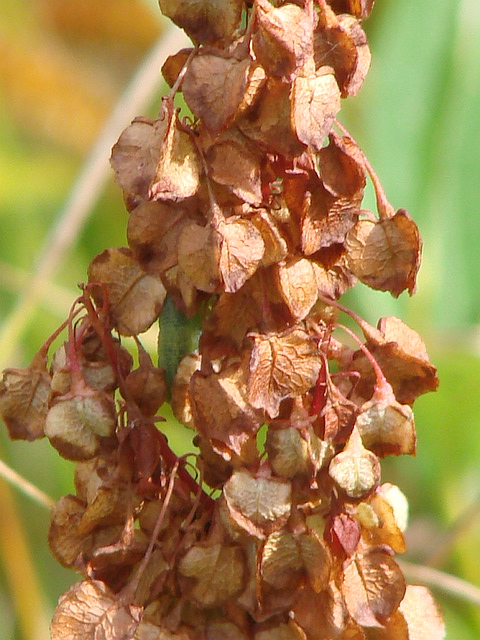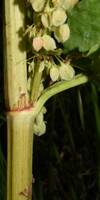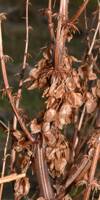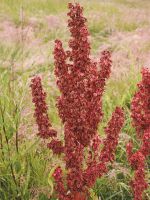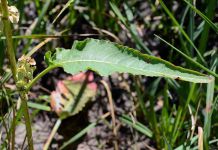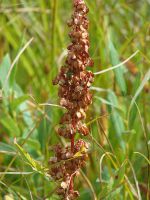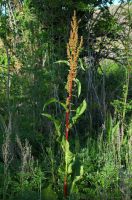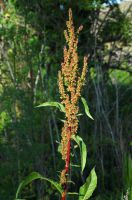Distribution: Occurring on both sides of the Cascades crest in Washington; Alaska to California, east to the Rocky Mountains, northern Great Plains, Great Lakes region, and eastern Canada.
Habitat: Moist to swampy areas and wet meadows, from the sea coast to foothill valleys.
Flowers: June-August
Origin: Native
Growth Duration: Perennial
Conservation Status: Not of concern
Pollination: Wind
Usually glabrous perennial from a strong taproot, the stem usually single, erect, stout, unbranched below the inflorescence, reddish-tinged, 10-20 dm. tall.
Basal leaves several, with sheathing stipules and long petioles, the blade oblong-ovate or oblong-lanceolate, 10-30 cm. long, cordate at base; cauline leaves few, much reduced upward.
Inflorescence a large panicle, leafy-bracteate below, the branches ascending; pedicels slender, 2-3 times as long as the flowers; flowers perfect; outer 3 perianth segments 1.5-2 mm. long, not reflexed; inner 3 segments triangular to oval, 3-11 mm. long, truncate at base, entire or denticulate on the margins, strongly veiny; styles 3.
Achene about 4 mm. long, smooth.
Publication: Proc. Amer. Acad. Arts. 12: 253. 1877.
Rumex aquaticus L. var. fenestratus (Greene) Dorn [ILBC4]
Rumex bakeri Greene
Rumex confinis
Rumex fenestratus Greene
Rumex fenestratus Greene var. labradoricus Rech. f.
Rumex gracilipes Greene
Rumex occidentalis S. Watson var. labradoricus (Rech. f. ) Lepage
Rumex occidentalis S. Watson var. procerus (Greene) J.T. Howell [HC]
Rumex procerus
-
var. occidentalis – western dock
 Occurring on both sides of the Cascades crest in Washington; Alaska to California, east to the Rocky Mountains, northern Great Plains, Great Lakes region, and eastern Canada.
Occurring on both sides of the Cascades crest in Washington; Alaska to California, east to the Rocky Mountains, northern Great Plains, Great Lakes region, and eastern Canada.
PNW Herbaria: Specimen records of Rumex occidentalis in the Consortium of Pacific Northwest Herbaria database
WA Flora Checklist: Rumex occidentalis checklist entry
OregonFlora: Rumex occidentalis information
E-Flora BC: Rumex occidentalis atlas page
CalPhotos: Rumex occidentalis photos



